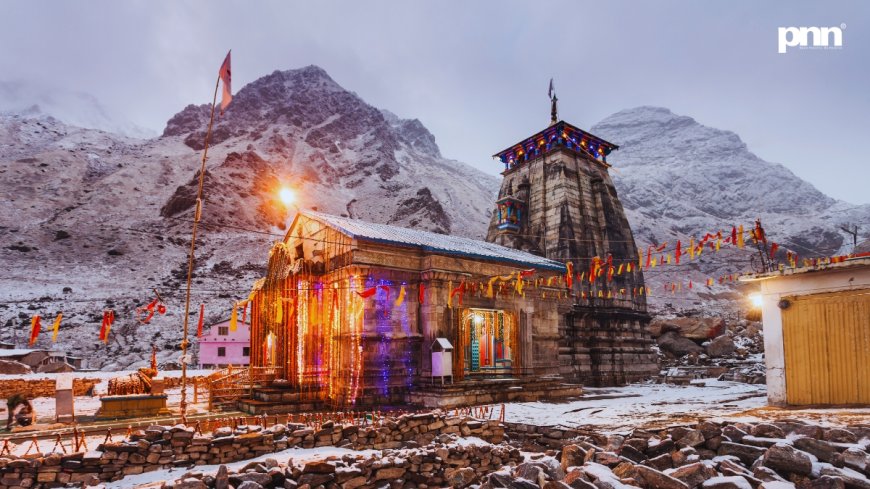Chardham Yatra helicopter services restart with strict safety push – 2025
Chardham Yatra helicopter services have resumed after the monsoon, but under the strictest safety regime yet. DGCA has rolled out new checks, pilot training, and real-time monitoring. A wake-up call for aviation safety in India’s toughest terrains.


New Delhi [India], September 18: After a stormy summer of accidents and audits, Chardham Yatra helicopter services are back in the skies.
This time, the DGCA isn’t playing nice; safety is king.
DGCA clears choppers for take-off
The Directorate General of Civil Aviation (DGCA) has greenlit helicopter services for the Chardham Yatra 2025, effective September 15–16, just after the monsoon break.
Pilgrims heading to Kedarnath, Badrinath, Gangotri, and Yamunotri can now book seats again, but they’ll be flying under the tightest safety regime the sector has seen in years.
Why the crackdown?
May–June this year wasn’t pretty. Multiple helicopter accidents in the Chardham sector put the spotlight on safety lapses that had been ignored for too long. The Centre wasn’t about to let history repeat itself.
Civil Aviation Minister Rammohan Naidu and Uttarakhand Chief Minister Pushkar Singh Dhami held multiple meetings in both Dehradun and Delhi to coordinate with key agencies, including the Directorate General of Civil Aviation (DGCA), the Airports Authority of India (AAI), and the Uttarakhand Civil Aviation Development Authority (UCADA).
The result? No chopper flew again until the regulator tore through inspections, audits, and paperwork like a hawk.
Safety first, this time, literally
DGCA’s mantra for Chardham 2025 is blunt: zero tolerance for lapses. And they’ve backed it with objective measures.
Stronger pilot rules
- Mandatory route checks and recurrent training.
- Extra drills for high-altitude flying and rough weather.
- Only experienced pilots cleared to fly the sector.
Helicopter airworthiness
- Every aircraft got a comprehensive inspection.
- Maintenance checks now run on a tighter schedule.
Ground and passenger safety
- Strict enforcement of weight and balance.
- Mandatory modern navigation and comms equipment.
- Passengers get safety briefings before every flight.
- More ground staff deployed at helipads to regulate crowds.
Watchdogs everywhere
DGCA has stationed teams at critical helipads, ordered surprise checks, and given itself the power to ground operations on the spot.
Meanwhile, AAI has positioned air traffic controllers in advisory roles, and the IMD has deployed weather officers on the ground. Add UCADA staffers operating control rooms, and the skies look a lot less lawless.
The services in play
Two primary services are back on:
- Charter services from Dehradun’s Sahastradhara helipad to all four shrines.
- Shuttle services to Kedarnath Ji Helipad from Guptkashi, Phata, and Sitapur.
Six helicopter operators will run the shuttle clusters. Seven operators and consortia are handling the Dehradun-based charters.
Why this matters for pilgrims
The Char Dham circuit isn’t just spiritually challenging; it’s a logistical nightmare—high-altitude shrines, remote valleys, unpredictable weather, and thousands of pilgrims every season.
Helicopters have been the saving grace for people, people with disabilities, and frankly, anyone unwilling to test their lungs against Uttarakhand’s thin air. But when accidents hit, trust vanishes fast. This reset, according to the government, is designed to win back that trust.
India context: A wider safety wake-up call
India has one of the fastest-growing aviation sectors in the world, but regulation often plays catch-up. The Chardham crackdown sends a clear message: whether it’s Air India’s international jets or single-engine helicopters in Uttarakhand, the DGCA wants to be taken seriously.
It also speaks to a broader trend: spiritual tourism is experiencing a surge in popularity. And with it comes responsibility, from state governments, operators, and yes, regulators who can’t afford to nap at the controls.
The fine print: DGCA’s checklist
- Pilots: trained, checked, qualified.
- Choppers: inspected, certified, and monitored.
- Passengers: briefed and assisted.
- Operators: audited and accountable.
- Weather and traffic: tracked in real-time.
- Oversight: relentless.
Simple translation: no excuses, no shortcuts.
To Conclude
The DGCA has promised constant monitoring throughout the Yatra season. Pilgrims will be flying under stricter rules, but that also means safer skies.
As Minister Naidu put it in Delhi, this isn’t just about moving pilgrims; it’s about setting a benchmark for how religious tourism should be managed in India’s most challenging terrains.
And let’s face it: if this play works, it’s a template India can run in every high-risk aviation pocket, from Amarnath in Jammu and Kashmir to the Northeast mountain strips.







